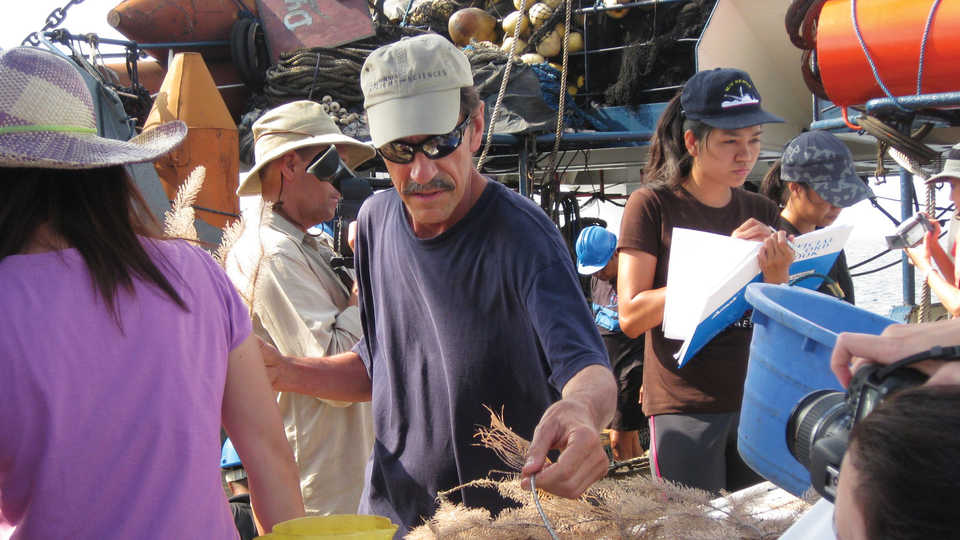Just outside the Academy’s back door lies one of the most productive marine ecosystems on Earth. The ruggedly beautiful Farallon Islands and the surrounding Greater Farallones and Cordell Bank National Marine Sanctuaries support astounding numbers of white sharks, marine mammals, seabirds, and more than 25 endangered or threatened species.
Despite this richness, scientists have operated with a blurry view of offshore biodiversity due to lack of funding for exploration and stymied political pushes for sanctuary expansion. A change began in 2012, when Gary Williams—one of the world’s experts on octocorals, deep-sea corals, and coral reefs—was asked to join a crack team of biodiversity surveyors on a NOAA-led exploration of the reserves.







